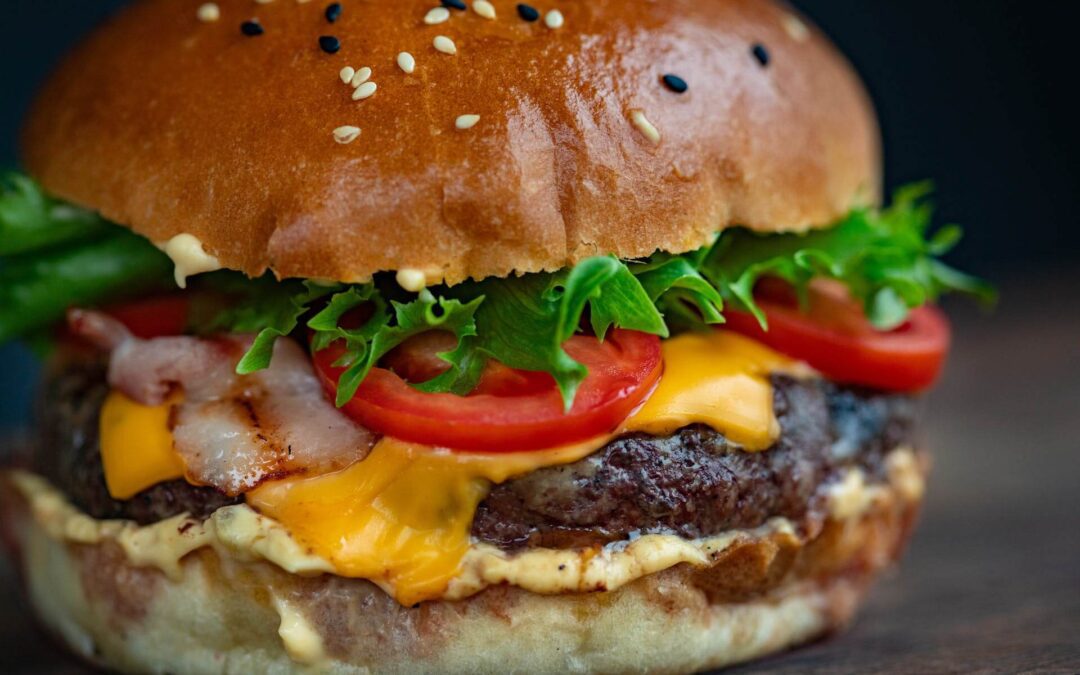Many believe exercising and following a Ketogenic diet are the healthiest and most effective strategies to boost metabolism, burn fat, and enhance overall health.
So, what happens when you put them together?
You may undoubtedly predict a strong synergistic impact; many claim that combining Keto with the correct fitness regimen was a watershed moment in their health journey. The research is beginning to back up these claims.
A recent research, for example, compared low-carb ultra-endurance athletes against athletes on a more typical diet. During a three-hour run, runners eating low carb for around 20 months burned 2-3 times more fat than those eating high carb.
But the tale isn’t always so straightforward.
When you dramatically cut carbohydrates and enter ketosis, it produces a chain reaction of changes in the body’s many systems, some of which influence activity.
Depending on your health and fitness objectives, you may need to change your workout routine or explore a modified Keto diet.
We’ve created this guide to help you negotiate the (often tricky) link between exercise and ketosis.
This post will teach you how to get the most out of your workout and Keto experience. We’ll clarify myths, show you how to avoid traps and maximize your performance at the gym, and walk you through selecting an exercise program suited to your unique health objectives.
Best Exercises for Weight Loss
Weight training, LISS (Low Intensity, Steady State), and HIIT (High Intensity Interval Training) exercise programs are often the most effective for weight loss.
Weight training builds compact, lean muscle mass frequently lost during calorie restriction. Furthermore, increasing muscle mass allows you to work harder and move quicker during aerobic exercise, resulting in more fat and calories expended.
LISS is an aerobic exercise that pushes you hard enough to crank up your metabolism but at a low enough intensity that you can keep working out for 60 minutes or more while burning the most calories.
HIIT is an anaerobic workout involving vigorous cardio in 10 to 60 seconds bursts that raises the body’s resting metabolic rate. Frequently, HIIT sessions help you burn more fat even when you’re not moving.
Weight training may cause a temporary rise in “scale weight” owing to increased muscle mass. When this happens, measuring your progress in inches and how your clothes fit is best.
Specifics
Weight Training: To optimize both benefits, combine low reps/high weight (for muscle growth) with high reps/low weight (for muscular endurance) when weight training is used for weight reduction.
Use enough weight to experience muscular exhaustion after 5-10 reps of low reps/high weight. Lower the weight just enough to complete 15-20 repetitions before muscle fatigue sets in when doing high reps and lower weight.
Focus on exercises that use many muscles simultaneously, including squats, bench presses, and deadlifts, to get the most out of a brief session.
An enhanced hormonal profile is another advantage of combining weight training and Keto. At least one research suggests that Keto may raise testosterone in men, leading to quicker muscle mass growth and fat reduction when paired with weight exercise.
LISS: This type of workout is designed to burn as many calories as possible and often involves spending 30 to 60 minutes in the “fat-burning zone.”
The “burning zone” is 70-80 percent of maximum heart rate exertion. While the data is divided, proponents of LISS argue that it aids in the acceleration of weight loss, increases blood flow, and promotes oxygen delivery inside cells.
Subtract your age from 220 to determine your fat-burning zone. Multiply the result by 7 and 8 to determine your heart rate range.
Example for a 40 year old: 220 – 40 = 180 x .7 = 136. This is the bottom of the range. Then 220 – 40 = 180 x.The top limit of the content is 8 = 144. So, for a 40-year-old, the “fat-burning zone” heart rate range would be 136 to 144.
Running, quick walking, cycling, cardio equipment, and swimming are all instances of LISS.
In addition, there is some evidence that Keto may improve LISS endurance and performance.
HIIT: Interval training in short, intense bursts of 10 to 60 seconds is used in this workout method. Examples include
sprints, pushups, sit-ups, lunges, jumping rope, burpees, or similar activities. HIIT frequently incorporates cardio and strength training to achieve a well-rounded exercise.
According to proponents, HIIT is unique among fitness routines in increasing the body’s metabolic rate and ability to burn fat while at rest.
Several preliminary studies, like this meta-analysis from the British Journal of Sports Medicine, may corroborate these assertions, although further research is needed.
Click here to learn more about the Keto diet.
How to Maintain Peak Performance on Keto
Some people who follow a Ketogenic diet may perform poorly during high-intensity anaerobic activities. This is because muscles need glycogen (produced from carbohydrates) to perform during high-energy, short-burst training.
These are some examples of such exercises:
- Lifting weights till they fail or are near to failing
- More than 10 seconds of full-speed sprinting, cycling, or swimming
- Sports with little rest pauses, such as soccer, rugby, and lacrosse.
- Circuit training, HIIT, or Crossfit
Individuals may have the same type of diminished performance in various workouts owing to their unique body composition and genetics.
This decline in performance does not affect the fat-burning and body recomposition effects of such activities.
Keto dieters who notice a drop in performance can typically restore their baseline performance levels by switching to a modified Keto diet.
The two most popular variations of the modified Keto diet are:
Targeted Ketogenic Diet (TKD): This variation of Keto requires users to have a meal containing 20-50 grams of net carbohydrates 30-60 minutes before exercise. This gives a concentrated carbohydrate surge to nourish muscles and replenish glycogen reserves for future workouts.
Cyclical Ketogenic Diet (CKD), also known as Carb Cycling, entails consuming a low-carb keto diet for 5-6 days and a higher-carb, low-fat diet for 1-2 days. This strategy replenishes muscle glycogen reserves once a week while allowing the user to stay in deep ketosis for the rest of the week.
The outcomes of both procedures are nearly identical.
Select the option that best fits your specific schedule and food choices.
Click here to learn more about the Keto diet.
Tips for Exercising on Keto
#1 – Always listen to your body.
The first few weeks of Keto can be challenging as your body adjusts to using fat as its primary fuel source. Don’t feel awful about taking it easy during this period of transition. Listen to your body if it tells you to lessen your workouts’ intensity temporarily.
You may also notice decreased performance, even in workouts that do not need a large amount of glycogen. This impact is often just transient. Your physical performance will return to baseline once you’ve fat-adapted.
#2 – Set a daily calorie goal.
While “Calories-In/Calories-Out” (CICO) is not the only factor in body composition, it is essential.
- To set a calorie target in this program, follow these steps.
- If you want to lose weight, choose a calorie deficit.
- Choose a calorie surplus to build up and lose body fat.
#3 – Connect a fitness device.
Consider utilizing a Fitbit, Garmin, or Apple Health gadget for more exact calorie burn statistics.
# 4 – Eat enough protein.
Maintain protein at around 25% of total calories, or 0.8-1.0 grams per kilogram of total body weight, to ensure your muscles have the raw material they need to strengthen.
Consider ingesting closer to 1.6 grams of protein per kilogram of body weight to grow considerable muscle. But don’t go too far. According to research, protein consumption beyond 1.6g/kg of body weight per day provides no further advantages.
#5 – Get plenty of rest.
To recuperate successfully between exercises, your body needs profound rest. Take days off from training, and rest and sleep well on those days so your body can recover and create ideal levels of muscular tissue.
# 6 – Drink plenty of water.
As previously stated, increasing water consumption is critical while following a Keto diet to avoid dehydration and electrolyte imbalances. When you add exercise to the mix, this becomes even more vital.
# 7 – Maintain electrolyte levels.
Like point #7 above, this is necessary with Keto alone, but it becomes much more critical when combined with Keto. You may replenish electrolytes by eating enough green leafy vegetables like kale, spinach, and collard greens and adding pink Himalayan sea salt to your diet and drink. You can also take a high-quality commercial electrolyte supplement as an option.
Putting it All Together
While the ketogenic diet has a “bad rap” in some sports circles regarding performance, it can be readily adapted to retain performance levels observed with carb consumption while giving all of the benefits of ketosis.
Flexibility is one of the most effective elements of Keto. Keto can be changed and adapted to accommodate vegetarians, vegans, or those adhering to Kosher or Halal, and it can also be easily tweaked for exercise-based performance.
According to research, ketosis possesses potent fat-burning and weight-loss effects. Combined with your preferred workout, it becomes a powerful combo that may help you achieve your long-term health and fitness objectives.
What’s Next?
If you’re not already, log food and exercise, track weight loss, get motivation from our community, and much more!



![How Low Carb and Ketogenic Diets Boost Brain Health [Benefits & Effects]](https://eathealthyisgood.com/wp-content/uploads/2023/11/pexels-ella-olsson-1640773-1-1080x675.jpg)



0 Comments